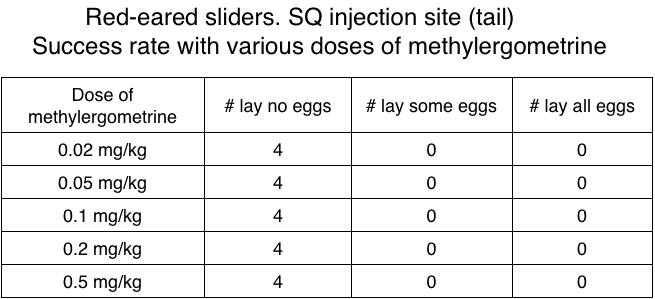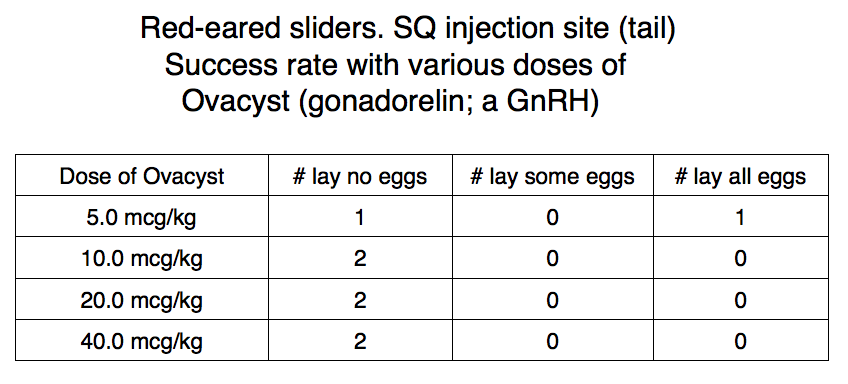Some ideas that did not work
Since the biochemical complexities of reptilian reproduction are poorly understood we decided to experiment with a few unlikely drugs to induce egg laying because it is known that different species of lizards use similar hormones/prostaglandins in different ways (Guillette et al. 1992) and that might be true for turtles as well.
Methylergometrine is an ergot alkaloid that causes the contraction of uterine smooth muscle and is used as a treatment for postpartum bleeding in women. We thought it was possible it would also trigger functional contractions of the oviduct. We tried a wide range of doses as shown below but it had no effect on oviposition.

Ovacyst (gonadorelin diacetate tetrahydrate) is a hypothalamic releasing factor that causes the secretion of FSH and LH from the anterior pituitary. It is known that PGF-2 is involved in the secretion of FSH and LH so we thought it was possible these hormones might have something to do with oviposition. We tried a wide range of doses as shown in the table below; none had any effect.

Mifepristone, also known as RU 486, is an oral drug used to produce abortion early in mammalian pregnancy. It is a competitive progesterone receptor antagonist. It is known that progesterone is responsible for egg retention in snapping turtles (Mahmoud et al.1988) so we thought it might be involved in RES too. We administered the mifepristone 48 hours before the mix of oxytocin and Lutalyse. As the table below shows it was no better than oxytocin + Lutalyse alone. It was also tedious to prepare for injection since it had to be dissolved in oil. The obvious flaw in this experiment was that the progesterone levels in RES may already have been quite low when they emerged onto the laying area.

However, there are several species of turtle known to be able to retain their fully developed eggs for extended periods. At least one of these species, the Australian eastern snake neck turtle (Chelodina longicollis), is resistant to induction with Lutalyse so we plan to use another, injectable progesterone receptor antagonist called aglepristone with these turtles in New Zealand from 2021-2023; theorizing that elevated progesterone levels are responsible for their ability to retain those fully developed eggs.
